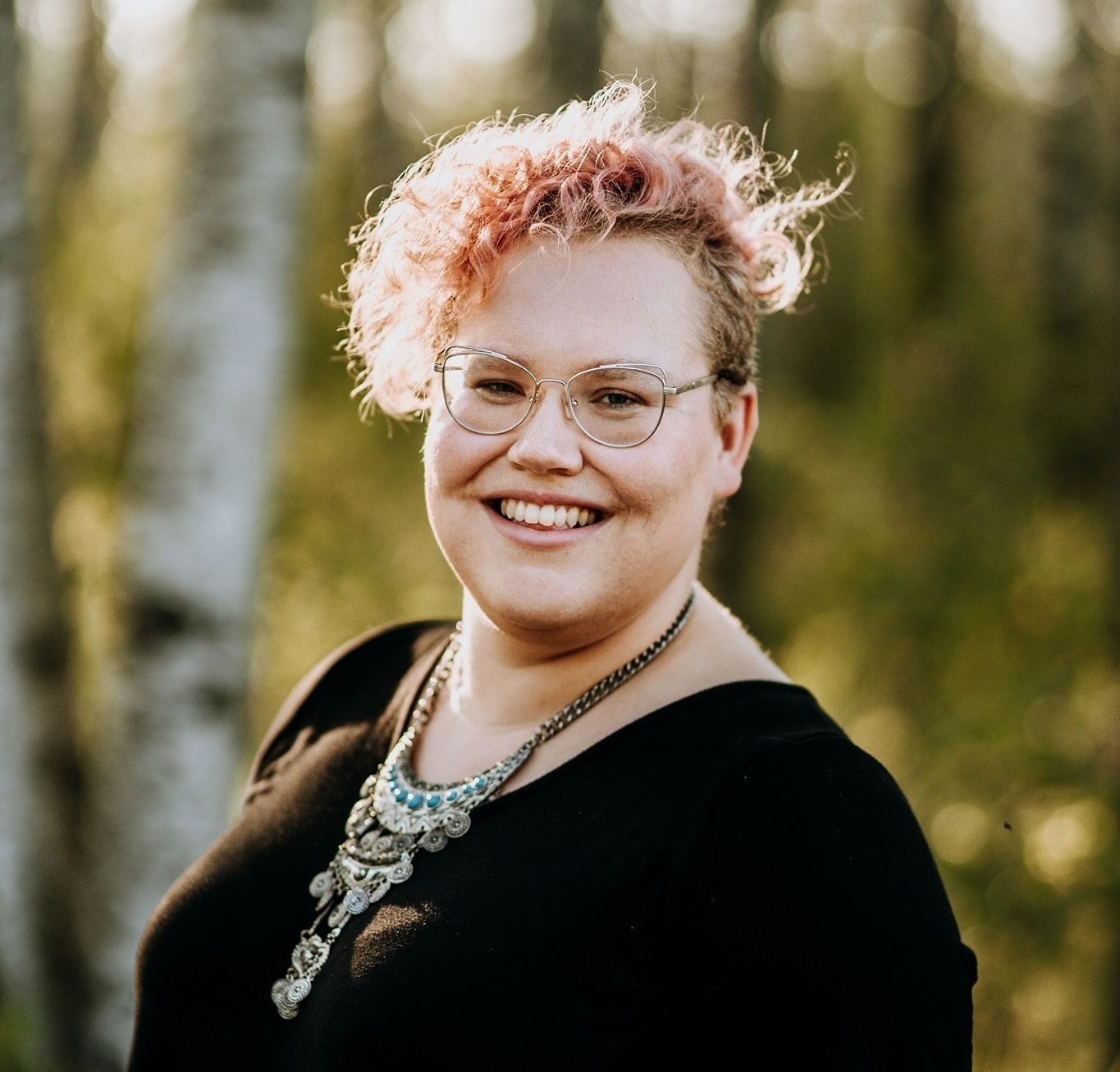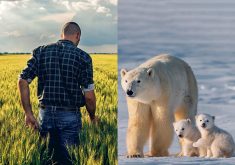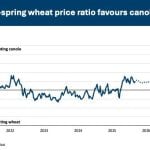Glacier FarmMedia – The three metal-framed stations in the pig barn conjure the image of a starting gate at the Kentucky Derby.
A pen opens. For a minute, the air is full of galloping hoofs and excited grunts.
Twenty pigs between the dividers, through three short isles equipped with lights and cameras and pool in the pen on the opposite side.
Read Also
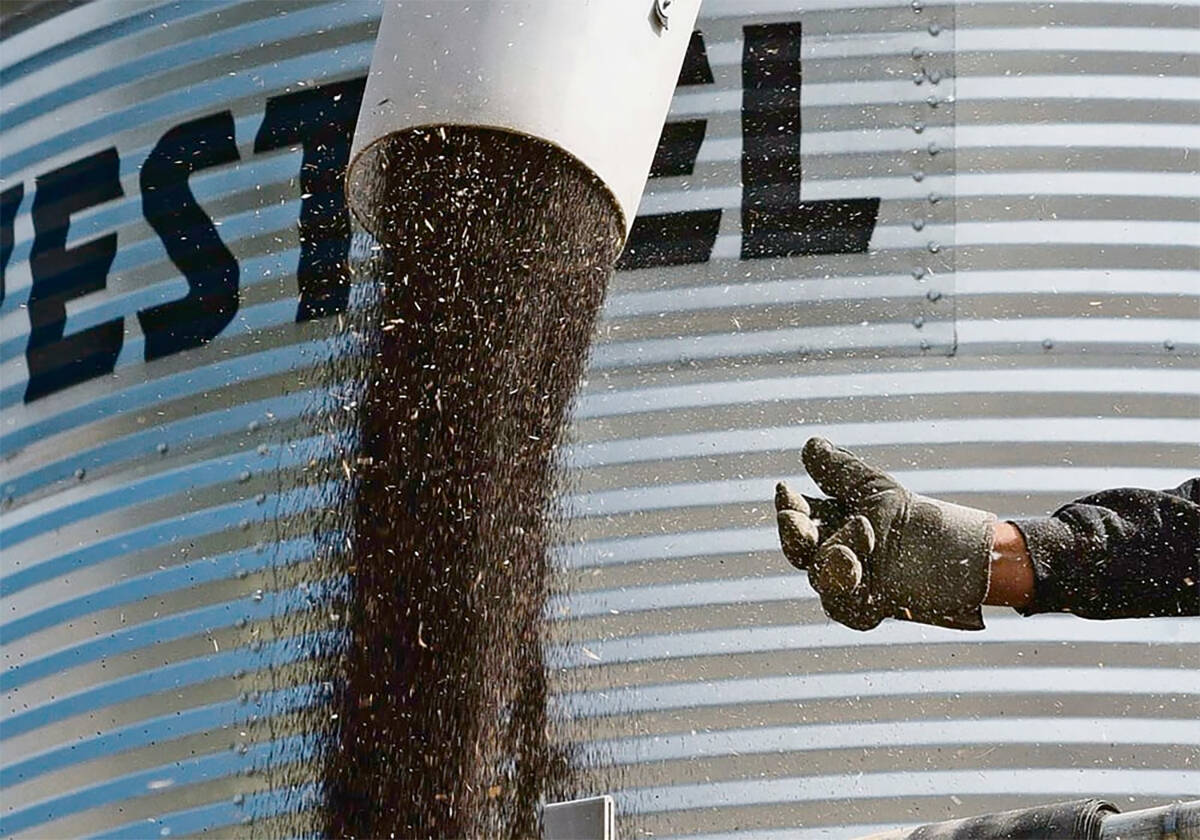
Farmers urged to be grain-safe this fall
Working around grain bins comes with risk, from farmers falling to drowning in grain: Experts have five tips to help avoid grain-related accidents this harvest.
FranÇois (Frank) Decarie, one of the research partners developing a new low-labour weighing method for livestock, leans over a table set up beside the stations. He hits play, and a recording of the rush of pigs pops up across three monitors. Footage from the aisle cameras feeds into computer models trained to identify individual pigs, he tells attendees of his demonstration at the Bruce D. Campbell Farm and Food Discovery Centre near Glenlea.
The models use that data to draw an outline through the animals and draw shapes around key anatomical features like the hams, the shoulders, spine and first rib. The system then combines measurements to infer what the hog weighs.
All said, it took handlers longer to get all the pigs in the same pen than it did to weigh the porkers.
Today’s barns can integrate increasingly sophisticated computer and sensor technology to maximize efficiencies and profits.
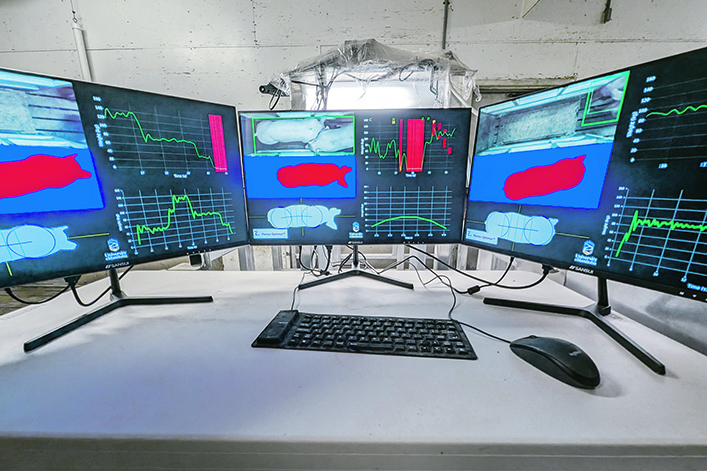
Decarie is a veteran of the Royal Canadian Air Force and worked as a communications electronic engineer. The research project, which he and his research partner Charles Grant call Porcus Optimus, is part of his doctoral thesis in electrical and computer engineering.
The project is backed by Moccus Maximus, a company Grant owns with an investor.
The system has undergone many run-throughs and has learned which measurements are best at predicting the animal’s size, and weights the data accordingly, demonstration attendees heard.
It’s not perfect. In one case, Decarie noted, the computer drew an outline around two pigs instead of finding individuals.
That’s why the pair of researchers are still validating the Porcus Optimus at the Glenlea location.
At present, the stations are still fitted with conventional scales for the pigs to run over. The computer uses the camera to judge when the pig is in the right place and lines that up with the fluctuating input from the scale.
“When they gallop through, we can still be accurate,” said Grant, a senior instructor in the University of Manitoba’s agribusiness department. “The pigs love to go as a herd through the stations.”
They don’t actually need the scale anymore. It’s just there to feed more data into the system, said Grant.
The computer vision system is a speedy method to weigh and count a pen or truckload of pigs. However, Decarie and Grant suggested it could do a lot more. The data could be fed into an optimizer, which could be used to predict ideal shipping times or suggest tweaks to feed regimens.
The pigs in the Glenlea barn have RFID tags, which allows the system to assign weights to specific pigs and could allow for individualized growth curves. However, since Decarie and Grant expect many producers won’t want to tag pigs (the tags aren’t compliant with PigTrace, the pork industry’s standard traceability system), they are also running trials without the use of individually tracked pigs.
“That way we’ll be able to actually measure if there’s a value of having tags at all,” Decarie said.
“Eventually, we’d like to be able to ID the pigs with just a camera, and we’re exploring other avenues,” he added.
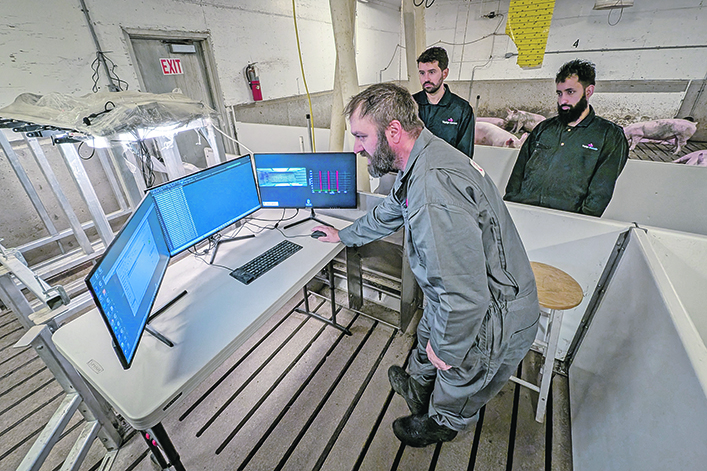
Decarie and Grant custom-built the weigh station for their space at Glenlea. The idea is that, once commercialized, each producer will tailor the Porcus Optimus to their needs. Grant and Decarie envision stations in a barn’s loadout room or on an arm that can be swung over an alley.
The expectation is that they’ll sell the computer vision system as a service rather than a finished product, Grant said. They plan to continue research and continuously improve the system.
The scaling stations would be in the barn and the data could go onto the company’s server, which could generate reports for the producer or send notifications.
Decarie and Grant plan to present some of their research at the Banff Pork Seminar in January.
They plan to begin commercialization some time in 2025.

